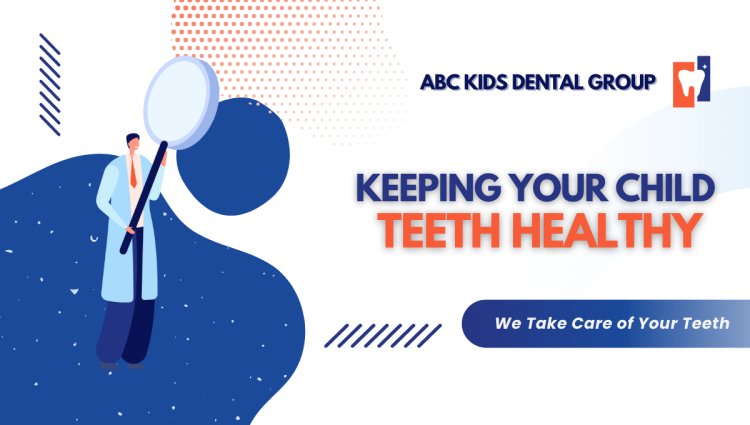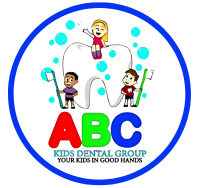Keeping Your Child Teeth Healthy
Child Teeth Healthy - Parents often have difficulty determining the number of their children who need to receive dental care.

Parents often have difficulty determining the number of their children who need to receive dental care. They're aware that they need to keep their teeth clean but don't always know how to achieve this. Here are some helpful tips and guidelines.
When is the right time for kids to start brushing their teeth?
Dental hygiene is important prior to the first tooth of a child being visible. Even if you don't see your teeth does not mean that they're not present. Teeth begin to develop in the second trimester of pregnancy. Your baby is born with 20 teeth primary, a few of which are fully developed within the jaw.
Here's how and when to look after those little choppers:
- Before your baby even begins teething, place a dry, clean washcloth over your gums to eliminate harmful bacteria.
- When your baby starts to get teeth, make sure to clean them with this baby toothbrush. Use water along with a small amount of fluoride toothpaste (about the equivalent of rice grains). Make sure to use toothpaste with fluoride that has an American Dental Association's (ADA) seal of approval. (If you're using baby toothpaste that does not contain fluoride, limit it to the same amount since you'll still want to reduce the amount of toothpaste consumed.)
- If your baby's teeth meet the gums, you can start flossing between them.
- At around the age of two, your child should be able to spit while brushing. Do not give children water in order to splash and spit in, as this could increase the likelihood of swallowing toothpaste.
- Children aged 3 and over are advised to use a tiny quantity of toothpaste with fluoride.
- Be sure to supervise children younger than 8 when brushing, because they're most likely to take toothpaste in their mouths.
Even babies can get tooth decay. Sleeping a baby by drinking a bottle could damage the teeth of a child. Sugars from formula, juice, or milk that sit on the teeth of a baby for a long time could cause damage to the enamel (the layer of the tooth that guards against tooth decay). This can cause "bottle mouth" or "baby bottle tooth decay." If this occurs the front teeth may become discolored, pocked, and swollen. Cavities may form, and, in the most severe instances, the teeth that are decayed may require extraction.
At 6 months, when children are old, they are able to switch between a bottle and sippy cups (with straws or a hard spill). This prevents the liquid from pooling around the child's teeth. At the age of their first birthday, they'll be able to use the motor skills and coordination required to use the cup independently.
What is the best time for kids to see a Dentist?
The ADA suggests that children visit an appointment with a dentist before the age of one. In the first visit, the dentist will go over the correct techniques for brushing and flossing and conduct a modified exam as your child sits in her lap.
These visits can help identify issues early, and also help children learn to be comfortable going to the dentist so that they be less hesitant to visit as they age. You might want to consider taking your children to visit a dental professional that has a specialization in treating children. Dental professionals who specialize in pediatric dentistry are trained to deal with the variety of issues that affect children their dental health. They are also aware of when to refer you to a specialist of a different kind, like an orthodontist who can fix an overbite or an oral surgeon to help with jaw realignment.
If your child is believed to be at risk of cavities or other dental issues The dentist might begin applying fluoride to the area even before the teeth are fully formed (this is also a possibility in the office of a pediatric dentist). The tooth enamel is strengthened by fluoride which helps in preventing the most frequent oral disease in childhood known as dental cavities (also known as dental caries).
What can we do to prevent Cavities?
- Cavities. occur when bacteria and food particles left on the teeth after eating aren't removed. Acid builds up on the tooth and softens the enamel until a hole or cavity develops.
- Get good oral habits in the early years. Teach kids to brush twice every day with fluoride toothpaste as well as to floss frequently.
- Find adequate fluoride. Regular use of fluoride hardens enamel and makes it more difficult for acids to get through. While many cities require that tap water be treated with fluoride, other towns do not. If your water source isn't fluoridated, or if your family members drink purified water, you should ask your dentist about fluoride supplements. The majority of toothpaste contains fluoride, however, toothpaste alone won't provide complete protection for a child's teeth. Be cautious because excessive fluoride can create tooth discoloration. Consult your dentist prior to taking supplements.
- Reduce or eliminate certain food items. Sugary foods, juices, and candy (especially sticky gum, gummy vitamins, or fruit leather, also known as "roll-ups") could damage enamel and lead to cavities. If your children eat these types of food, make sure they rinse afterward or floss their teeth, to wash off the sugar. This is the same for sweetened liquid medicine Always make sure that your kids clean their mouths or brush their teeth following a meal.
As your child's permanent tooth gets bigger, the dentist can prevent decay by applying a fine coat of resin (called a sealant) on the back teeth which are where the majority of chewing happens. The coating protects against bacteria from entering those hard-to-reach spaces that are found in the upper molars. However, make sure your children be aware that sealants aren't an alternative to regular daily flossing or brushing.
What dental problems can occur?
If you're susceptible to gum disease, your children could be at risk too. Therefore, sometimes even the best hygiene practices like flossing and brushing can't stop a cavity from occurring. It is important to contact your dentist when your child is complaining of tooth pain. This could indicate a dental cavity that requires treatment.
New dental materials ensure that pediatric dentists have more fillings and repair options than they have ever. An amalgam-colored substance that is silver-colored (a special mixture of metals) was the material that was used for fillings for permanent teeth. However, more modern types of resins, such as composite resins, are becoming increasingly popular. Resins bind to teeth so that fillings won't be able to pop out. They also are used to restore teeth that have been damaged by injuries or other conditions such as a dental cleft. Since they are usually tooth-colored, they're regarded as more appealing.
In cases of decay that is extensive, fractures, or malformations of an infant's teeth, dentists usually choose ceramic or stainless steel crowns. Crowns keep the tooth healthy while stopping decay from getting worse.
In rare cases typically, when a more complex dental procedure needs to be required the dentist may recommend the use of general anesthesia. Parents must ensure that the person who administers the medication is a certified anesthesiologist or oral surgeon prior to accepting the procedure. Do not be afraid to ask your dentist any questions.
Regularly scheduled checkups and good dental hygiene can prevent the necessity of dental work that is extensive. Encourage your children to wear a mouthguard while playing games, which can help stop grave dental trauma.
What is Orthodontia?
As kids age their bites and straightness of their teeth may be a problem. The treatment for orthodontics is beginning earlier than it did in the past and braces have evolved too. The old, embarrassing gear that was a mouth full of braces and metal wires has gone away. As young as 7 wear braces and corrective appliances and plastic-based (sometimes transparent) materials have taken over metal.
Orthodontists are aware that manipulating teeth earlier can be more efficient and efficient over the long term. Teeth of children younger than age 5 can be placed using relatively minor orthodontic appliances, which can prevent the need for major treatments later.
What's Your Reaction?























